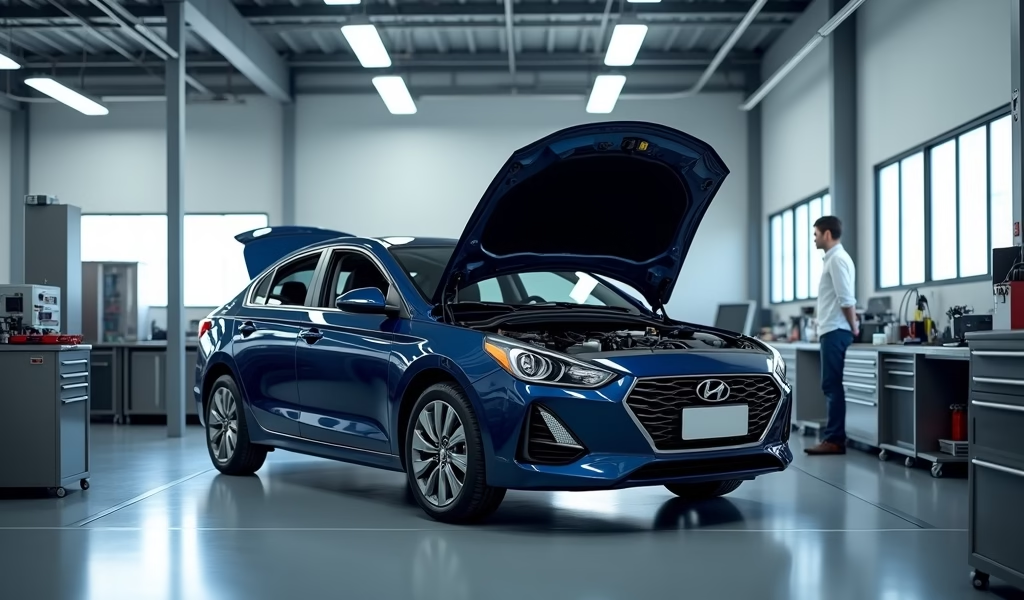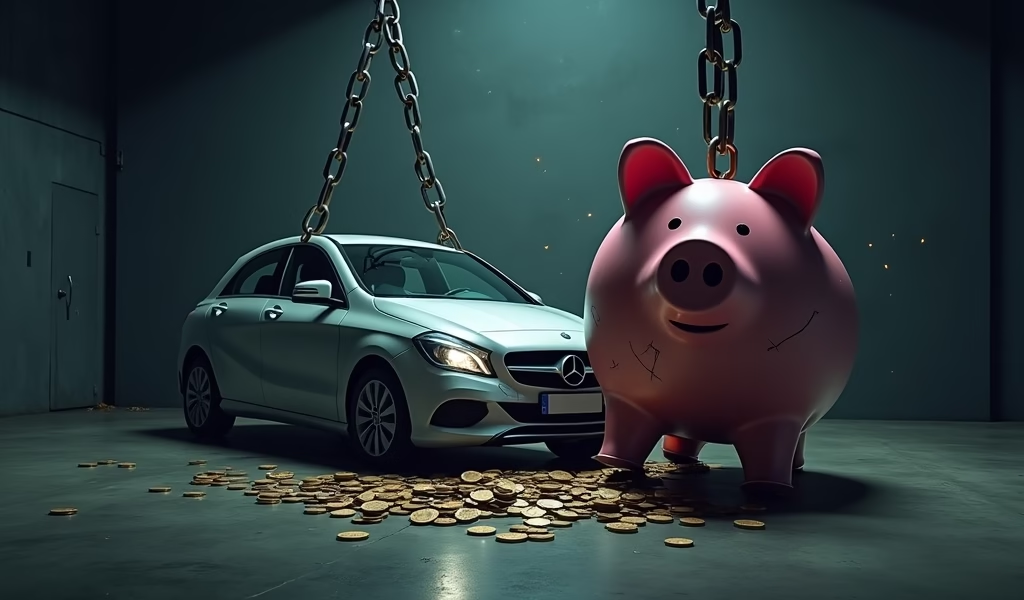Overview
This article explains why car insurance for teen drivers is significantly more expensive due to higher accident rates and inexperience, with premiums typically increasing 50-100% when adding a teen to a policy. It offers actionable strategies to reduce costs including good student discounts, driver education courses, choosing safer vehicles, comparison shopping between insurers, and establishing good driving habits from the start.
Table of Contents
- Understanding Teen Insurance Costs
- Why Teen Insurance Is So Expensive
- Average Costs Across The Country
- Factors Affecting Teen Insurance Rates
- Proven Ways To Save On Teen Insurance
- Choosing The Right Car For Your Teen
- Best Insurance Companies For Teen Drivers
- Building Good Driving Habits
- Conclusion
- Frequently Asked Questions
Understanding Teen Insurance Costs
Let’s face it – adding a teenager to your car insurance policy isn’t exactly what I’d call a wallet-friendly event. As someone who’s spent years in both the automotive and insurance industries, I’ve seen countless parents nearly fall off their chairs when they get that first quote. The reality of car insurance for teens is that it’s going to cost you – sometimes a lot.
But don’t panic just yet! While teen insurance rates are definitely steeper than what you’re paying for yourself, understanding why these costs are higher and knowing some insider tricks can help keep things somewhat manageable. Throughout my career helping families with their vehicles, I’ve gathered some valuable insights that might just save you a small fortune.
Teen drivers are expensive to insure for reasons that make perfect sense when you look at the data, but that doesn’t mean you have to empty your savings account to get your kid on the road safely. The good news? These high rates won’t last forever, and there are plenty of ways to trim those premiums down to size.
Why Teen Insurance Is So Expensive
Insurance isn’t personal – it’s statistical. And the stats don’t paint a pretty picture for teen drivers. Insurance companies aren’t trying to punish your teenager; they’re simply playing the odds based on decades of claims data.
Here’s the not-so-fun reality: teen drivers have crash rates nearly four times higher than drivers 20 and older. According to the Centers for Disease Control and Prevention, the risk is highest among 16-19 year-olds, with the first few months of licensed driving being particularly dicey.
The inexperience factor is huge. Teens haven’t developed the driving intuition that comes from years behind the wheel. They’re still learning to spot potential hazards, judge distances correctly, and make split-second decisions. It’s like throwing someone into the deep end of a swimming pool when they’ve only practiced in the bathtub.
Combine that inexperience with natural teenage tendencies – like thinking they’re invincible, being easily distracted, and sometimes making impulsive decisions – and you’ve got a recipe for higher accident rates. Insurance companies know this, and they price policies accordingly.

Average Costs Across The Country
So what’s this going to cost you? I won’t sugarcoat it – adding a teen to your policy typically increases your premium by about 80% on average. While the typical adult driver pays around $1,800 annually for car insurance, adding a 16-year-old can rocket that figure to somewhere between $3,200 and $5,000.
But these numbers vary wildly depending on where you live. If you’re in Michigan or Louisiana, you’re looking at some of the highest rates in the nation. Meanwhile, states like Idaho, Maine, and Ohio tend to be more gentle on the wallet. Urban areas almost always cost more than rural ones – sometimes twice as much.
The good news? These sky-high rates don’t last forever. Each year your teen gets older and builds a clean driving record, those premiums will gradually decrease. Think of each birthday as bringing a small insurance discount!
Here’s a rough breakdown of what you might expect to pay annually when adding a teen to your policy:
- 16-year-old: $3,500-$6,000
- 17-year-old: $3,000-$5,500
- 18-year-old: $2,800-$5,000
- 19-year-old: $2,600-$4,500
Remember, these are national averages – your actual costs could be higher or lower based on numerous factors. And yes, these numbers might make you consider whether your teenager really needs to drive right now (totally understandable!).
Factors Affecting Teen Insurance Rates
Beyond just age, several key factors will determine exactly how painful that premium increase will be. Some of these you can control, others you’re stuck with – but knowing them helps you understand your bill and potentially find savings.
Gender still matters in most states. Young male drivers typically pay about 14% more than young females of the same age, reflecting the statistical reality that teenage boys have more accidents. However, some states like California, Hawaii, Massachusetts, Michigan, North Carolina, and Pennsylvania have banned gender-based pricing.
The vehicle choice makes a massive difference. That sporty Mustang your son has his eye on? It could double his insurance compared to a sensible Honda Civic or Toyota Corolla. Cars with high safety ratings, lower repair costs, and less horsepower will always be cheaper to insure.
Your location is a major factor you can’t easily change. Urban areas with more traffic congestion, higher accident rates, and greater theft risk translate to steeper premiums. A teen driver in downtown Chicago will pay substantially more than one in rural Wisconsin for identical coverage.
Coverage levels make a huge difference too. Full coverage with low deductibles will cost substantially more than minimum liability coverage. While it’s tempting to go with minimum coverage to save money, I’ve seen too many families regret that decision after an accident.
Your own driving record affects your teen’s rates too. If you’ve got speeding tickets or at-fault accidents on your record, adding a teen will be even more expensive. This is why it’s smart to add teens to the policy of the parent with the cleanest driving history.
Proven Ways To Save On Teen Insurance
After years in this industry, I’ve learned there are plenty of ways to bring those premium costs down without sacrificing important coverage. These aren’t just small potatoes – some of these strategies could save you hundreds or even thousands per year.
Good student discounts are absolute gold. Most insurers offer substantial discounts – often 10-25% – for students maintaining a B average (3.0 GPA) or better. Suddenly those study sessions have a direct financial benefit! Make sure to send updated transcripts to your insurance company each semester.
Driver education courses beyond the minimum required for licensing can reduce premiums by 5-15%. Look into defensive driving courses specifically designed for teens – these often qualify for the biggest discounts. Some insurers even offer their own free programs that can lead to reduced rates.
Usage-based insurance programs like Progressive’s Snapshot or State Farm’s Drive Safe & Save can be particularly beneficial for responsible teen drivers. These programs track actual driving behavior through apps or devices and can lead to significant discounts for teens who prove they’re safe behind the wheel.
Raising deductibles is an easy way to lower premiums, though it means you’ll pay more out-of-pocket if there’s an accident. Increasing from a $250 to $1,000 deductible could save 15-30% on those comprehensive and collision premiums. Just make sure you have that deductible amount saved up in case it’s needed.
Policy bundling becomes even more valuable with teen drivers. Combining auto with home, renters, or other insurance typically saves 5-25%. When you’re looking at the bigger premium of a teen driver, these percentage savings become much more significant.
Perhaps the most important tip: comparison shop aggressively. I’ve seen identical coverage for the same teen driver vary by more than $1,000 annually between companies. Cheapest insurance for young drivers isn’t a one-size-fits-all situation – the company that’s most affordable for your neighbor’s teen might not be for yours.

Choosing The Right Car For Your Teen
The vehicle your teen drives can make or break your insurance budget. I’ve seen countless families make costly mistakes here, so let me save you some money and headaches.
First rule: forget performance cars. That Dodge Charger or Subaru WRX might look cool, but they’re insurance nightmares for teen drivers. High horsepower equals high premiums – sometimes astronomically so. Insurance companies know exactly what happens when inexperienced drivers get behind powerful engines.
The sweet spot for teen vehicles: midsize sedans and small SUVs that are a few years old. These vehicles strike the perfect balance of safety features, moderate repair costs, and insurance-friendly profiles. Honda Civics, Toyota Corollas, Mazda3s, and Subaru Imprezas consistently rank among the most affordable vehicles to insure for teens.
Safety features matter enormously. Modern vehicles with advanced driver assistance systems like automatic emergency braking, lane departure warnings, and blind spot monitoring not only keep your teen safer but can qualify for insurance discounts. According to the Insurance Institute for Highway Safety, these features significantly reduce accident rates.
Consider skipping collision and comprehensive coverage on very old vehicles. If the car is worth less than $3,000, you might be better off saving that premium money and replacing the vehicle if there’s an accident. That said, never skimp on liability coverage – that’s what protects your family’s assets if your teen causes harm to others.
Best Insurance Companies For Teen Drivers
Not all insurance companies approach teen drivers the same way. Some actually specialize in accommodating young drivers with special programs and more competitive rates.
State Farm consistently ranks as one of the best options for families with teen drivers. Their Steer Clear program offers both education and potential discounts for young drivers, and their good student discounts are among the most generous in the industry.
GEICO often provides competitive rates for families adding teen drivers to existing policies. Their multi-policy discounts can help offset the teen driver premium increases, and their online quote process makes comparison shopping easy.
American Family features the Teen Safe Driver program with potential savings up to 20%. It’s particularly valuable because it provides feedback on driving habits that can help your teen become safer behind the wheel, while also potentially earning you a better rate.
Progressive’s Snapshot program can be particularly beneficial for careful teen drivers who don’t drive late at night. Their Name Your Price tool also helps families find coverage that fits their budget constraints while maintaining necessary protection.
USAA consistently offers excellent rates for military families with teens, often beating competitors by a significant margin. If you have military connections and qualify for USAA, definitely include them in your comparison shopping.
The best approach? Get quotes from at least three different insurers, making sure you’re comparing identical coverage levels. Different companies weigh rating factors differently – the company giving your neighbor’s teen the best rate might not be your best option. For cheapest car insurance for new drivers under 25, you really need to shop around.
Building Good Driving Habits
As someone who’s spent decades working with vehicles and their owners, I can tell you that building good driving habits from the start doesn’t just save lives – it saves serious money too.
One accident can raise a teen’s already high rates by 20-40% for years. That fender bender could end up costing thousands in premium increases over time. This is why investing time in proper training and establishing clear driving rules is so important.
Consider creating a formal driving contract with your teen that addresses key risk factors: passenger limits, night driving restrictions, phone usage, and weather conditions. Studies show that teen accident risk increases dramatically with each additional teenage passenger in the car.
Technology can be your ally. Several apps can monitor teen driving and even disable texting while the vehicle is in motion. Some insurance companies offer these tools for free as part of their teen programs.
Make vehicle maintenance part of your teen’s driving education. Understanding basic car care not only prevents breakdowns but creates a deeper appreciation for the responsibility of driving. Show them how to check tire pressure, fluid levels, and recognize warning signs of potential problems.
Perhaps most importantly, model good driving behavior yourself. Teens learn more from what you do than what you say. If you’re constantly speeding, texting while driving, or exhibiting road rage, don’t be surprised when they adopt those same dangerous habits.
Conclusion
There’s no sugarcoating it – insuring teen drivers is expensive. But with strategic planning, comparison shopping, and teaching good driving habits, you can keep these costs somewhat manageable without compromising safety.
Remember that these high premiums are temporary. Each year your teen maintains a clean driving record, those rates will gradually improve. Think of it as an investment in your child’s independence and development of responsible habits that will benefit them throughout life.
The most important thing isn’t finding the absolute cheapest policy – it’s finding the right balance of affordability and protection. A serious accident with inadequate coverage could cost far more than years of higher premiums would have.
By combining the strategies we’ve discussed – from vehicle choice to discount programs to comparison shopping – you can craft an insurance approach that works for both your budget and your peace of mind. And isn’t that peace of mind what insurance is really all about?
Frequently Asked Questions
How much does adding a teen driver increase insurance?
Adding a teen driver typically increases insurance premiums by 50-100%, depending on location and other factors. A 16-year-old driver generally causes the highest increase, with costs gradually decreasing as they age.
Is it cheaper to put a teenager on their own policy?
No, it’s almost always more expensive to put a teenager on their own policy. Adding them to a parent’s existing policy typically costs 20-40% less than purchasing a separate policy.
At what age does car insurance go down for males?
Car insurance rates typically begin decreasing for male drivers at age 20, with another significant drop at 25. By age 30, male drivers usually pay rates comparable to their female counterparts.
How can my teenager qualify for good student discounts?
Most insurers offer good student discounts for maintaining a B average (3.0 GPA) or ranking in the top 20% of their class. Submit grade transcripts to your insurance company each semester to ensure the discount is applied.
Should my teen have liability-only or full coverage?
The decision depends on vehicle value and your financial situation. For newer vehicles or those with loans, full coverage is necessary, while older cars worth less than $3,000 might be better with liability-only coverage to save on premiums.

